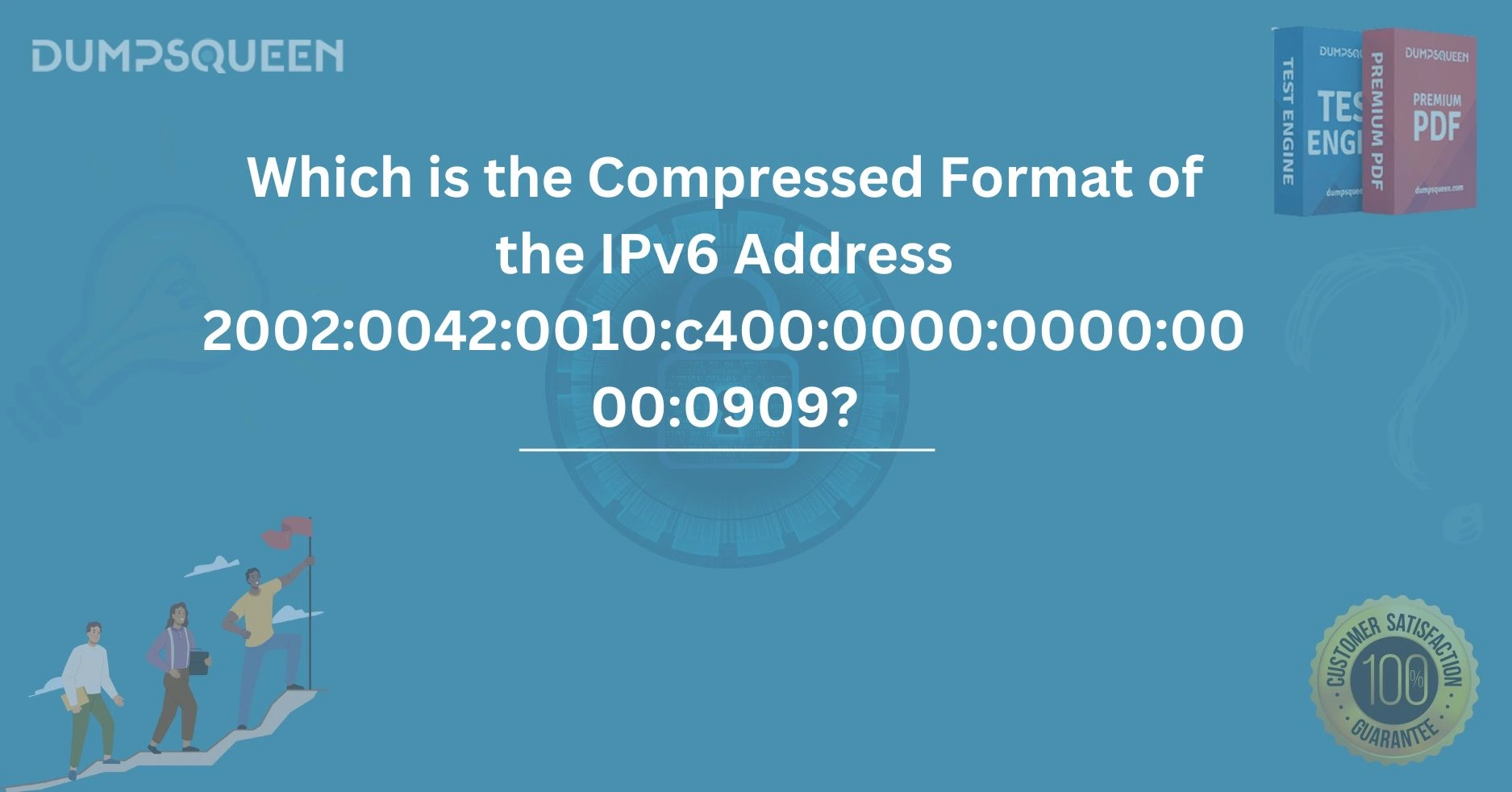Introduction
The Internet Protocol version 6 (IPv6) is the most recent version of the Internet Protocol (IP) used to identify devices and route traffic on a network. With the increasing number of devices connecting to the internet, IPv6 was developed to provide a larger address space than its predecessor, IPv4. One of the key aspects of IPv6 addresses is their length, which consists of 128 bits. This format can sometimes seem cumbersome to manage, so compression techniques have been developed to simplify the notation of these long addresses.
How IPv6 addresses are compressed and delve specifically into the compressed format of the IPv6 address 2002:0042:0010:c400:0000:0000:0000:0909. We will walk through how IPv6 addresses are structured, why compression is necessary, and how the given address is compressed following the rules of IPv6 address notation. This will give you a thorough understanding of how to handle and manipulate IPv6 addresses, especially in real-world networking scenarios.
What is IPv6?
IPv6, or Internet Protocol version 6, was introduced to address the limitations of IPv4, which had a limited number of unique addresses. IPv6 provides a vastly larger address space, allowing for an exponentially higher number of devices to connect to the internet. IPv6 addresses are written as 128-bit numbers, and typically, they are divided into eight groups of four hexadecimal digits, separated by colons.
IPv6 Address Structure
An IPv6 address is made up of 8 blocks, each containing 4 hexadecimal characters, making a total of 32 hexadecimal digits. These addresses are typically written in the form:
- xxxx:xxxx:xxxx:xxxx:xxxx:xxxx:xxxx:xxxx
Where "xxxx" represents a 16-bit group of digits in hexadecimal format.
However, given the length of an IPv6 address, it can be difficult to manage. This is why compression rules exist to make it easier to write and read IPv6 addresses.
The Need for Compression in IPv6
IPv6 addresses are lengthy and, as a result, can be hard to read, type, and memorize. For instance, the address 2002:0042:0010:c400:0000:0000:0000:0909 would be cumbersome to use in its full format. Compression methods were introduced to make these addresses easier to work with, and they follow specific rules:
-
Leading Zeros: Any leading zeros in a group of four hexadecimal digits can be removed. For example,
0042can be compressed to42. -
Zero Groups: Consecutive groups of zeros can be replaced with a double colon
::, but this can only be done once in an address to avoid ambiguity.
The Compressed Format of 2002:0042:0010:c400:0000:0000:0000:0909
Now that we know the general rules of compression, let’s take a closer look at the IPv6 address in question:
2002:0042:0010:c400:0000:0000:0000:0909
Step-by-step, let’s apply the compression rules:
Step 1: Removing Leading Zeros
First, we look at each block in the address and remove any leading zeros:
-
2002remains as2002 -
0042becomes42 -
0010becomes10 -
c400remains asc400 -
0000becomes0 -
0000becomes0 -
0000becomes0 -
0909remains as909
So, after removing the leading zeros, the address becomes:
2002:42:10:c400:0:0:0:909
Step 2: Replacing Consecutive Zero Blocks with ::
Next, we have multiple consecutive blocks of zeros. According to IPv6 rules, we can replace these consecutive zero blocks with a double colon ::. In this case, the three zero blocks 0:0:0 can be compressed as ::.
So, the compressed IPv6 address becomes:
2002:42:10:c400::909
This is the final compressed format of the given IPv6 address.
Understanding the Significance of IPv6 Compression
IPv6 compression plays a crucial role in making network configurations easier to read and manage. Without compression, IPv6 addresses could become overly cumbersome, especially in large networks or systems that require frequent referencing of IP addresses. Compression helps to:
-
Save Space: Reduces the length of addresses, making them more manageable.
-
Improve Efficiency: Shortened addresses are quicker to input and process.
-
Enhance Readability: Simplifies the address, making it easier for network administrators and engineers to work with.
For example, the compressed format 2002:42:10:c400::909 is much easier to manage compared to the full, uncompressed form.
Additional IPv6 Compression Examples
Let’s explore a couple more examples of IPv6 address compression to solidify your understanding.
Example 1: IPv6 Address 0:0:0:0:0:0:0:1
This address is often referred to as the "loopback" address. To compress it:
-
Removing leading zeros gives:
0:0:0:0:0:0:0:1 -
Replacing consecutive zeros with
::gives:::1
Example 2: IPv6 Address 2001:0db8:0000:0000:0000:ff00:0042:8329
To compress this address:
-
Removing leading zeros gives:
2001:db8:0:0:0:ff00:42:8329 -
Replacing consecutive zeros with
::gives: 2001:db8::ff00:42:8329
Conclusion
IPv6 compression is a vital technique for simplifying the representation of lengthy addresses, making them easier to handle in network configurations and management. By removing leading zeros and replacing consecutive zeros with a double colon, IPv6 addresses are shortened without losing any information.
In the case of the address 2002:0042:0010:c400:0000:0000:0000:0909, applying these rules results in the compressed format 2002:42:10:c400::909, which is easier to work with, particularly in large-scale networking scenarios. Understanding these rules and how to apply them is crucial for anyone working with IPv6 addresses in professional networking.
If you’re looking for more detailed information or need help with networking-related queries, feel free to visit the DumpsQueen We offer a range of resources to help you stay ahead in the world of digital networks and certifications.
Free Sample Questions
1. Which of the following is the correct compressed format for the IPv6 address 2002:0042:0010:c400:0000:0000:0000:0909?
-
A)
2002:42:10:c400::909 -
B)
2002::42:10:c400:0:0:909 -
C)
2002:42:10:c400::0909 -
D)
2002::42::10:c400:0:0:909
Answer: A) 2002:42:10:c400::909
2. Which block in the IPv6 address 2002:0042:0010:c400:0000:0000:0000:0909 remains unchanged after compression?
-
A)
0042 -
B)
0000 -
C)
c400 -
D)
0909
Answer: C) c400
3. What is the purpose of compressing IPv6 addresses?
-
A) To make them easier to read and manage
-
B) To ensure compatibility with IPv4
-
C) To reduce the size of packets
-
D) To enhance security
Answer: A) To make them easier to read and manage



